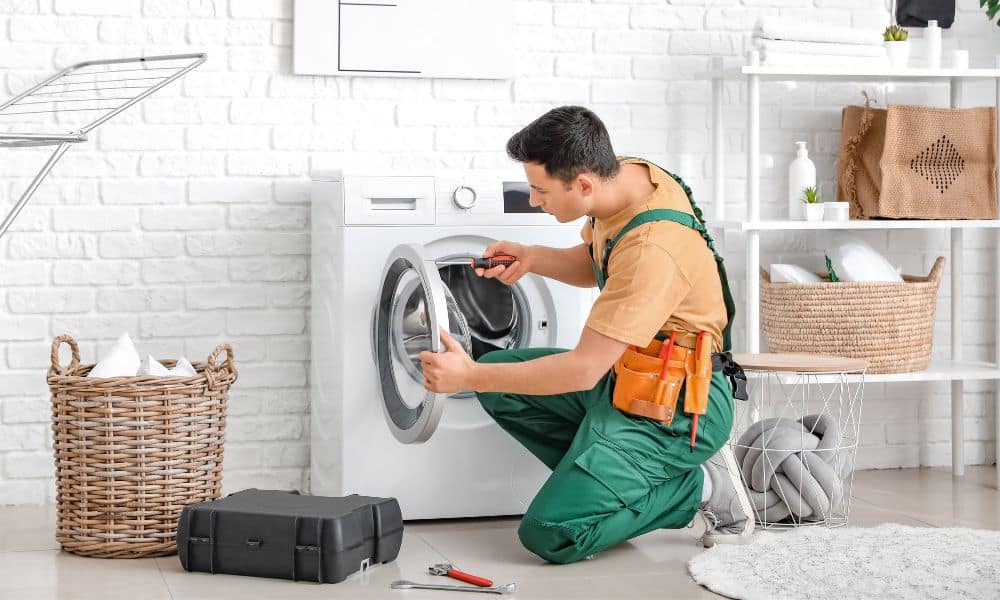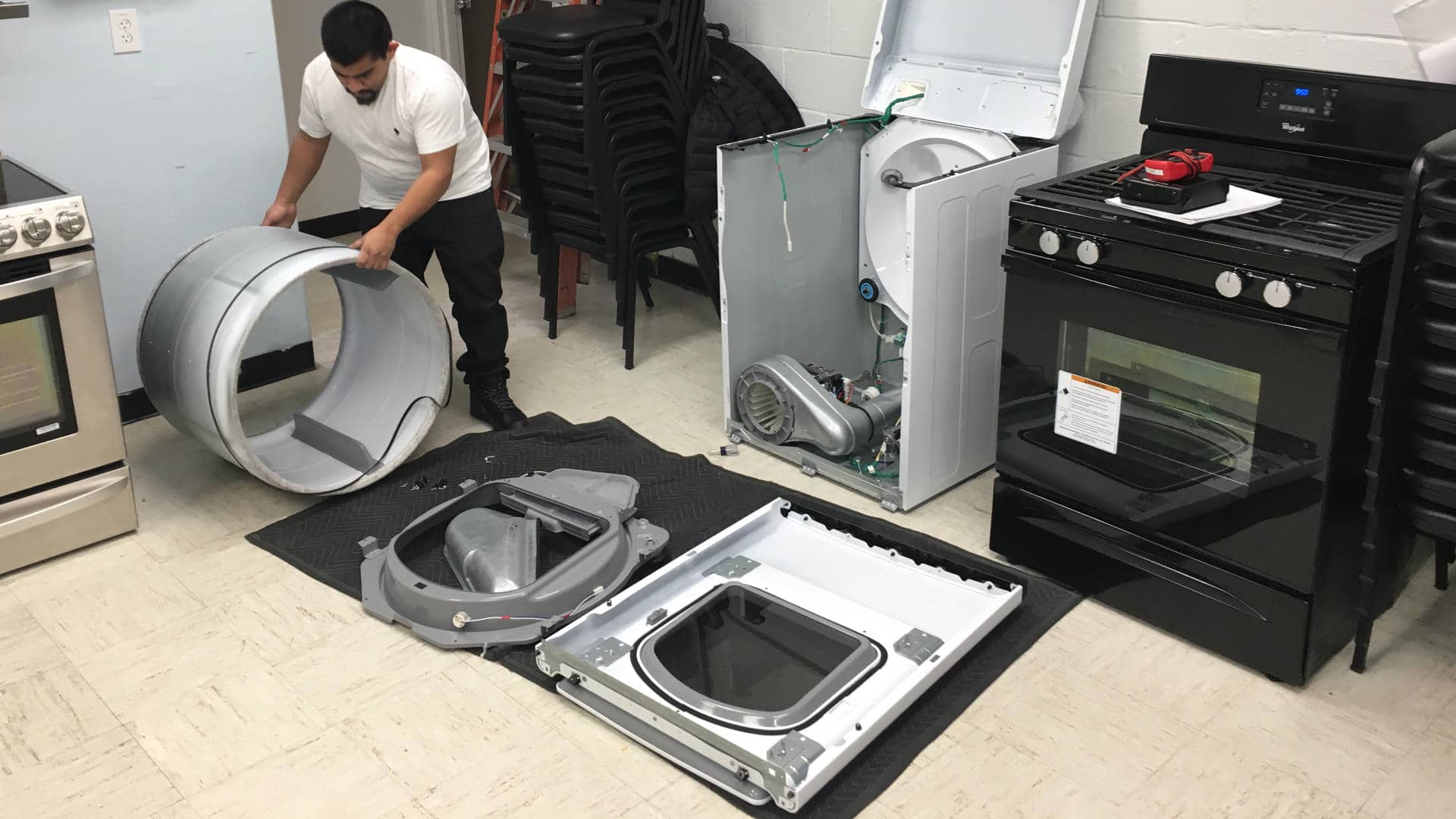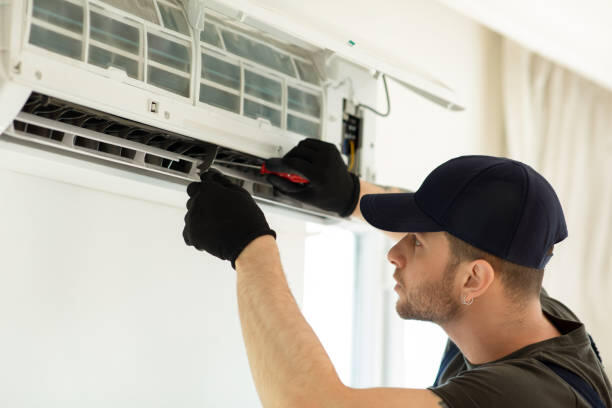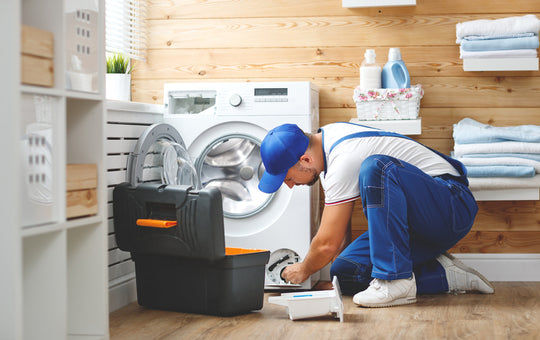Maintaining Your Washing Machine: A Complete Guide
Proper maintenance of your washing machine not only ensures it runs efficiently but also extends its lifespan and prevents common issues. This complete guide will walk you through essential practices for keeping your washing machine in top condition, from routine cleaning to addressing potential problems that can impact its performance.
Maintaining Your Washing Machine: A Complete Guide
Maintaining your washing machine is crucial for ensuring it operates efficiently and lasts for years. This guide provides comprehensive tips on how to keep your machine in top condition, addressing everything from routine cleaning to troubleshooting common issues. Regular maintenance not only prevents costly repairs but also ensures your clothes come out clean and fresh with every wash.
Regular Cleaning: Keeping your washing machine clean is fundamental. This includes wiping down the interior and exterior, cleaning detergent dispensers, and ensuring the drum is free from residue and odors. Monthly cleanings with a washing machine-specific cleaner can help remove detergent buildup and any lingering smells.
Preventive Care: Regular checks and maintenance can prevent most common washing machine problems. This involves checking hoses for leaks, ensuring filters are clear of debris, and verifying that the machine is level to avoid excessive vibration during cycles.
Addressing Common Issues: Familiarize yourself with common problems such as drainage issues, unbalanced loads, or operational errors. Understanding how to address these issues promptly can save you from inconvenient breakdowns and expensive professional repairs.
By following this guide, you can extend the life of your washing machine, improve its performance, and minimize the likelihood of disruptive malfunctions.
Regular Cleaning and Maintenance
Regular cleaning and maintenance are essential for keeping your washing machine in optimal condition and ensuring it performs efficiently. Here are some key steps you should follow to maintain your washing machine:
Clean the Detergent Dispenser: Residue can build up over time in the detergent dispenser, leading to clogs and inefficiency. Remove the drawer periodically and clean it with hot soapy water to remove any detergent or fabric softener residue.
Wipe Down the Gasket: The rubber gasket around the door of front-loading washers can trap moisture and debris, leading to mold and bad odors. After each use, wipe the gasket with a dry cloth to remove moisture and check for small articles of clothing or debris.
Run a Cleaning Cycle: Use a commercial washing machine cleaner or a homemade solution of hot water and vinegar to run an empty cleaning cycle at least once a month. This helps to remove any lingering odors and clears out detergent buildup.
Inspect and Clean the Filters: Most washing machines have filters that catch debris and small objects. Check and clean these filters regularly to prevent blockages that could affect your machine’s performance.
Check Hoses for Leaks: Inspect the water hoses connected to the back of your machine for signs of wear or leaks. Replace any hose that looks brittle, leaky, or damaged to prevent water damage and maintain water flow efficiency.
By incorporating these regular cleaning and maintenance tasks into your routine, you can extend the lifespan of your washing machine, avoid common issues, and ensure that your laundry comes out clean and fresh with every wash.
Preventing Mold and Mildew
Mold and mildew can be significant problems, especially in high-efficiency and front-loading washing machines, where the environment is moist and often warm. Preventing these issues is crucial to maintain the cleanliness and longevity of your machine. Here are effective strategies to prevent mold and mildew buildup:
Leave the Door Open: After completing your laundry, leave the washing machine door open to allow air circulation and help the interior dry out completely. This simple step is vital to prevent the damp conditions that mold and mildew thrive in.
Use the Right Detergent: High-efficiency washing machines require low-sudsing, high-efficiency detergents. Using the correct type and amount of detergent reduces soap residue, which can contribute to mold growth.
Clean the Gasket: Regularly clean the rubber door gasket with a mildew cleaner or a solution of warm water and vinegar. Ensure you pull back the gasket to clean behind it thoroughly, as this area is prone to water pooling and residue buildup.
Monthly Maintenance Wash: Run a maintenance wash monthly using hot water and a cup of vinegar or a specialized washing machine cleaner. This cycle helps kill any lingering mold spores and removes detergent build-up, keeping the interior fresh and clean.
Check and Clean the Drainage System: Ensure that the machine's drainage system is not clogged with lint or small items. Regular checks can help maintain proper drainage, preventing the stagnant water that mold requires to grow.
By implementing these preventive measures, you can significantly reduce the risk of mold and mildew in your washing machine, ensuring it remains clean, hygienic, and efficient.
Cleaning the Drum and Gasket
Regularly cleaning the drum and gasket of your washing machine is essential to prevent odors, mold, and mildew, and to ensure optimal performance. Here’s how to effectively clean these crucial components:
Cleaning the Drum
Use a Washing Machine Cleaner: Regularly run a cleaning cycle with a commercial washing machine cleaner to remove detergent build-up and any lingering bacteria or mold spores.
DIY Cleaning Solution: Alternatively, you can use a mixture of white vinegar and baking soda. Start a hot wash cycle and add two cups of white vinegar. Allow the machine to run for a few minutes, then pause the cycle and add a half cup of baking soda. Resume the cycle and complete it to clean the drum thoroughly.
Regular Hot Washes: Occasionally running your wash cycles at higher temperatures can help reduce the buildup of detergents and fabric softeners.
Cleaning the Gasket:
Wipe Regularly: After each use, wipe the rubber gasket with a dry cloth to remove moisture and any small fibers or debris.
Deep Clean: Monthly, clean the gasket with a mildew cleaner or a solution of hot water and vinegar, paying close attention to the folds and under the seal where moisture can accumulate and mold can grow.
Check for Objects: Regularly inspect the gasket for small objects or clumps of hair that might have escaped from the laundry, as these can retain moisture and contribute to mold growth.
Maintaining the cleanliness of the drum and gasket not only helps extend the life of your washing machine but also improves its efficiency and keeps your laundry fresh and hygienic. Regular attention to these areas can prevent the issues that lead to more significant problems down the line.
Common Washing Machine Problems
Familiarity with common washing machine problems can help you quickly identify and address issues that might affect the appliance's performance. Here are some of the most frequent issues encountered, along with tips on how to handle them:
- Washer Won't Start
- Excessive Vibration
- Water Not Filling the Drum
- Water Not Draining Properly
- Unpleasant Odors
Washer Won't Start. This could be due to an issue with the power source, a tripped circuit breaker, or a faulty door latch. Check to ensure the machine is plugged in and receiving power, and inspect the door latch for any malfunctions.
Excessive Vibration. Often caused by an unbalanced load or an uneven floor. Make sure the washing machine is positioned on a flat surface and adjust the load to ensure it's evenly distributed. Adding leveling feet or anti-vibration pads can also help stabilize the machine.
Water Not Filling the Drum. This might be due to a kinked hose, clogged filter, or faulty water inlet valve. Check the hoses and filters and clean them if necessary. If the problem persists, the water inlet valve may need replacing.
Water Not Draining Properly. A clogged drain or malfunctioning pump can prevent water from draining out of the drum. Check the drain hose and pump for blockages or debris.
Unpleasant Odors. Persistent odors can be a sign of mold or mildew buildup. Regular cleaning of the drum and gaskets, as suggested, can prevent these odors.
Understanding these common problems and knowing how to troubleshoot them can keep your washing machine running smoothly and extend its lifespan. Regular maintenance and timely interventions can prevent minor issues from escalating into major repairs.






